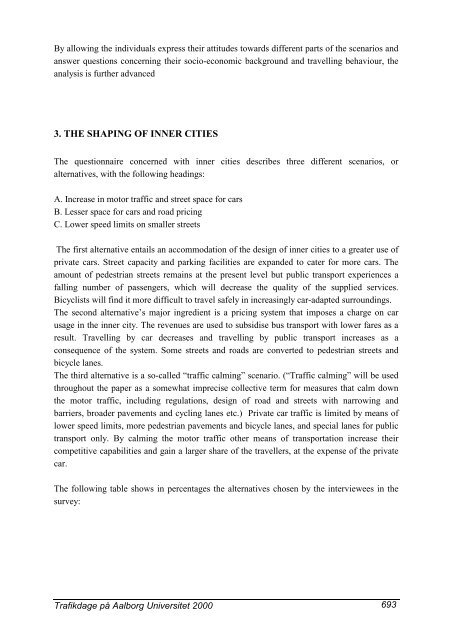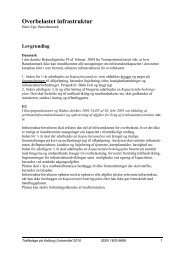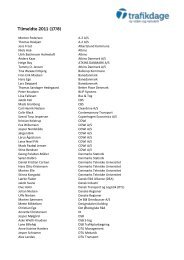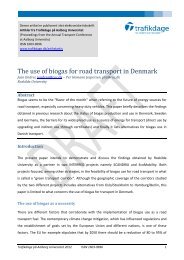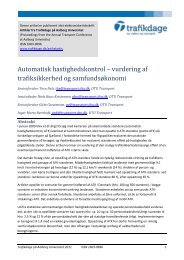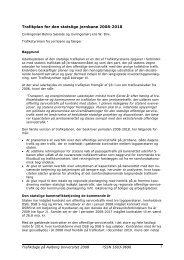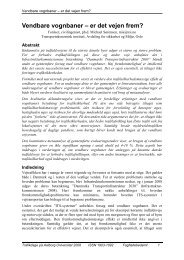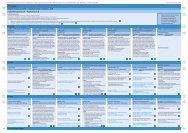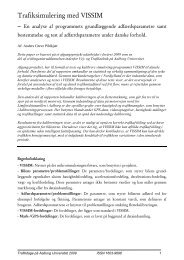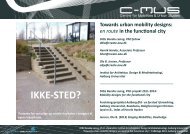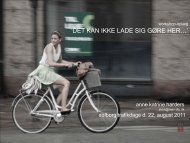Hent paperet som PDF-fil - Trafikdage.dk
Hent paperet som PDF-fil - Trafikdage.dk
Hent paperet som PDF-fil - Trafikdage.dk
You also want an ePaper? Increase the reach of your titles
YUMPU automatically turns print PDFs into web optimized ePapers that Google loves.
By allowing the individuals express their attitudes towards different parts of the scenarios and<br />
answer questions concerning their socio-economic background and travelling behaviour, the<br />
analysis is further advanced<br />
3. THE SHAPING OF INNER CITIES<br />
The questionnaire concerned with inner cities describes three different scenarios, or<br />
alternatives, with the following headings:<br />
A. Increase in motor traffic and street space for cars<br />
B. Lesser space for cars and road pricing<br />
C. Lower speed limits on smaller streets<br />
The first alternative entails an accommodation of the design of inner cities to a greater use of<br />
private cars. Street capacity and parking facilities are expanded to cater for more cars. The<br />
amount of pedestrian streets remains at the present level but public transport experiences a<br />
falling number of passengers, which will decrease the quality of the supplied services.<br />
Bicyclists will find it more difficult to travel safely in increasingly car-adapted surroundings.<br />
The second alternative’s major ingredient is a pricing system that imposes a charge on car<br />
usage in the inner city. The revenues are used to subsidise bus transport with lower fares as a<br />
result. Travelling by car decreases and travelling by public transport increases as a<br />
consequence of the system. Some streets and roads are converted to pedestrian streets and<br />
bicycle lanes.<br />
The third alternative is a so-called “traffic calming” scenario. (“Traffic calming” will be used<br />
throughout the paper as a <strong>som</strong>ewhat imprecise collective term for measures that calm down<br />
the motor traffic, including regulations, design of road and streets with narrowing and<br />
barriers, broader pavements and cycling lanes etc.) Private car traffic is limited by means of<br />
lower speed limits, more pedestrian pavements and bicycle lanes, and special lanes for public<br />
transport only. By calming the motor traffic other means of transportation increase their<br />
competitive capabilities and gain a larger share of the travellers, at the expense of the private<br />
car.<br />
The following table shows in percentages the alternatives chosen by the interviewees in the<br />
survey:<br />
<strong>Trafikdage</strong> på Aalborg Universitet 2000 693


